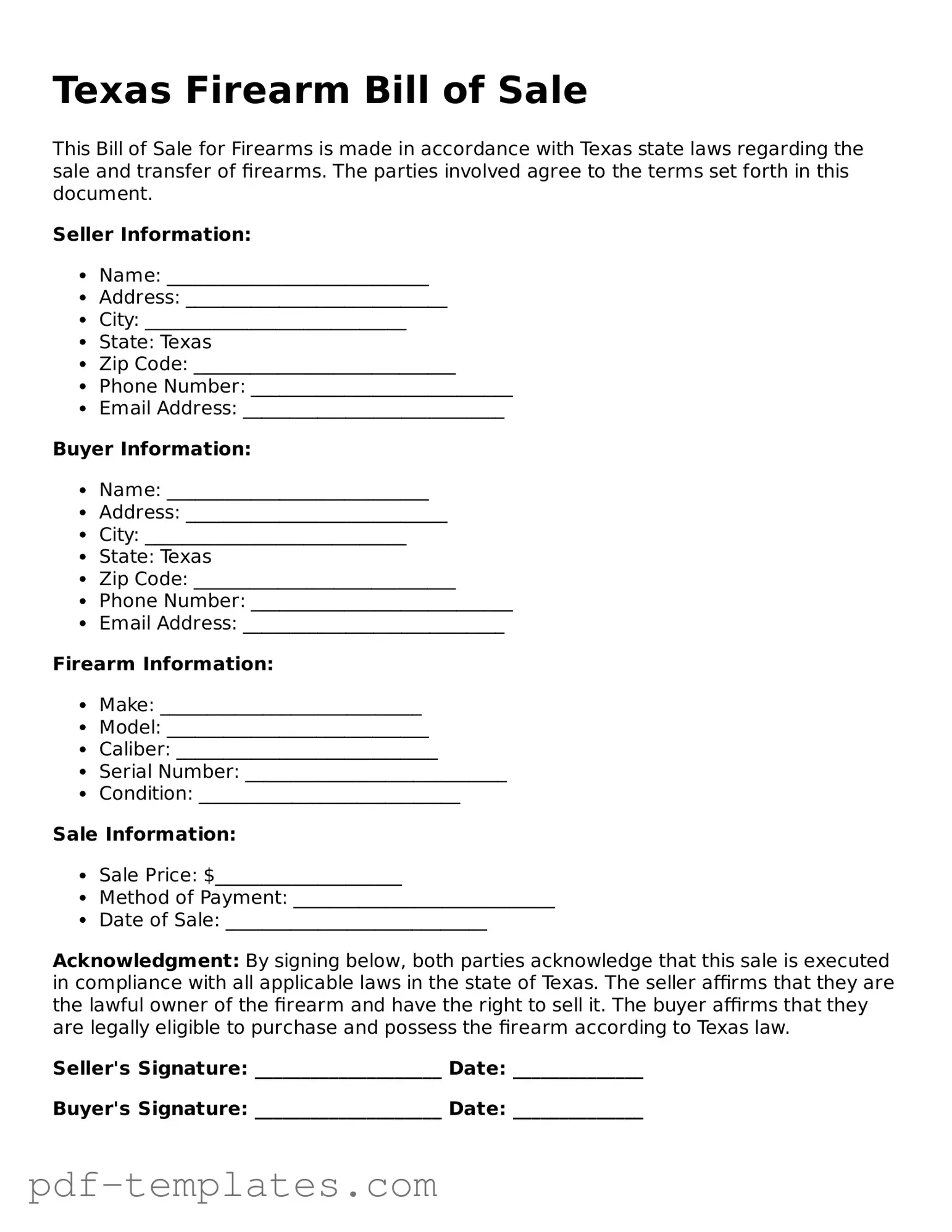The Texas Firearm Bill of Sale form is similar to a Vehicle Bill of Sale. Both documents serve as proof of transfer of ownership from one party to another. A Vehicle Bill of Sale typically includes details such as the buyer and seller's information, vehicle identification number (VIN), and sale price. Like the firearm bill, it protects both parties by documenting the transaction and ensuring clarity regarding ownership.
Another document that shares similarities is the Boat Bill of Sale. This form is used when transferring ownership of a boat, much like the firearm bill is used for firearms. It includes information about the buyer, seller, and the boat itself, such as its hull identification number (HIN). Both documents help establish legal ownership and can be important for registration purposes.
The Personal Property Bill of Sale is also comparable. This form is used for the sale of various personal items, including electronics or furniture. Like the firearm bill, it includes the names of the buyer and seller, a description of the item, and the sale price. Both documents serve as proof of ownership transfer and can protect the interests of both parties in the transaction.
The Lease Agreement can be seen as similar in its purpose of documenting an agreement between two parties. While it is not a sale document, it outlines the terms of leasing property or equipment. Like the firearm bill, it requires clear identification of the parties involved and details about the item being leased. Both documents aim to clarify the terms and protect the rights of the involved parties.
In order to ensure your child's welfare in various circumstances, you might consider utilizing a legal document such as the temporary Power of Attorney for a Child arrangement. This form can provide crucial support when you are unable to take care of your child directly, allowing another trusted adult to step in as needed.
A Rental Agreement also shares similarities with the Texas Firearm Bill of Sale. This document outlines the terms under which one party rents property from another. It includes essential details such as the names of the parties, the rental property description, and the rental price. Just like the firearm bill, it provides a clear record of the agreement and protects both parties' rights.
The Equipment Bill of Sale is another document that resembles the Texas Firearm Bill of Sale. This form is used for the transfer of ownership of equipment, such as tools or machinery. It includes buyer and seller information, a description of the equipment, and the sale price. Both documents serve the same purpose of providing proof of ownership transfer and ensuring that both parties are clear about the transaction.
The Real Estate Purchase Agreement can be likened to the firearm bill as well. This document outlines the terms of buying and selling real estate. It includes information about the buyer, seller, property description, and sale price. Both documents are crucial in formalizing a transaction and protecting the rights of those involved.
Lastly, the Warranty Deed shares similarities with the Texas Firearm Bill of Sale. A Warranty Deed transfers ownership of real property and guarantees that the seller has the right to sell it. It includes details about the parties involved and a description of the property. Both documents aim to provide a clear record of ownership and ensure that the transaction is legally binding.
